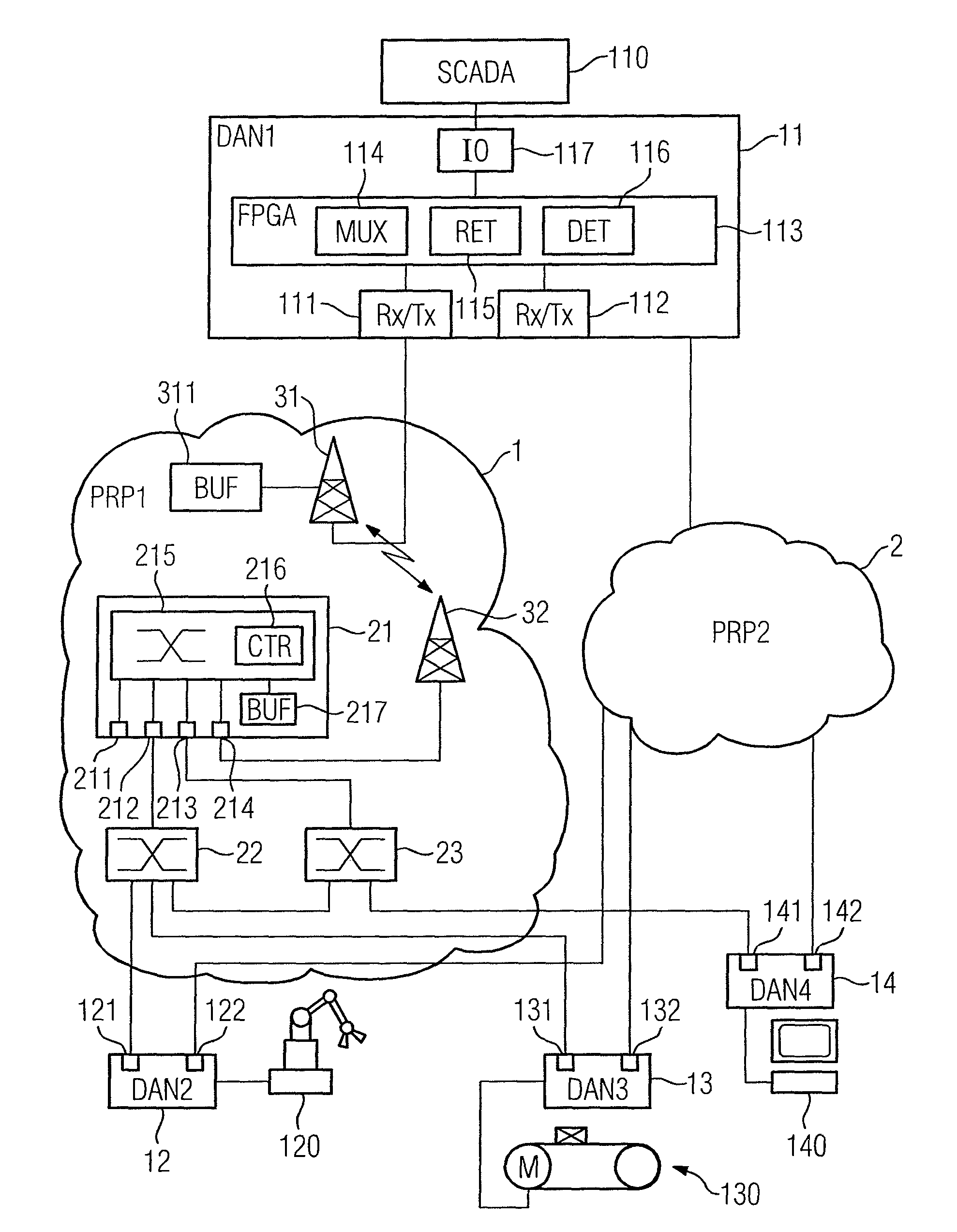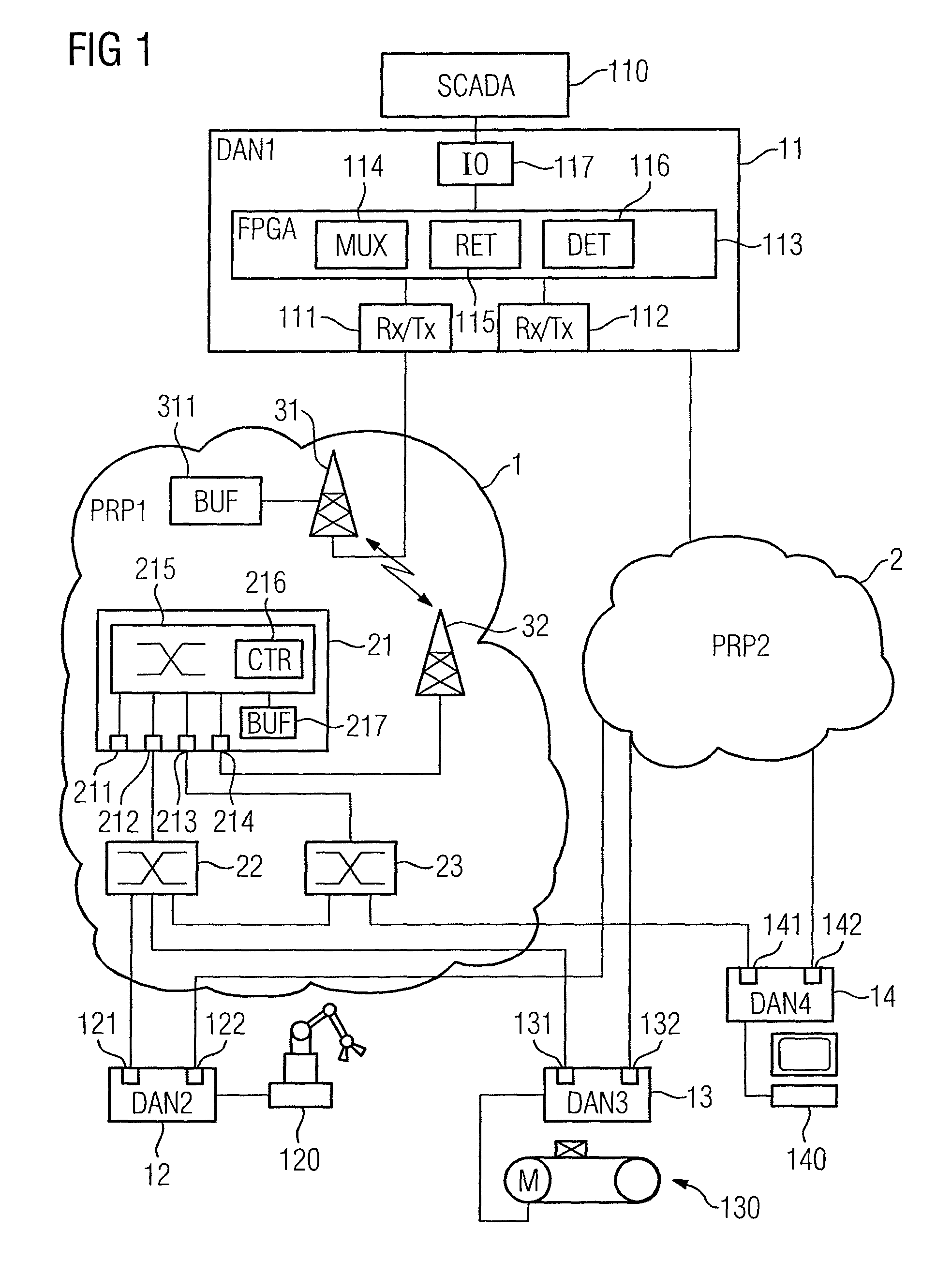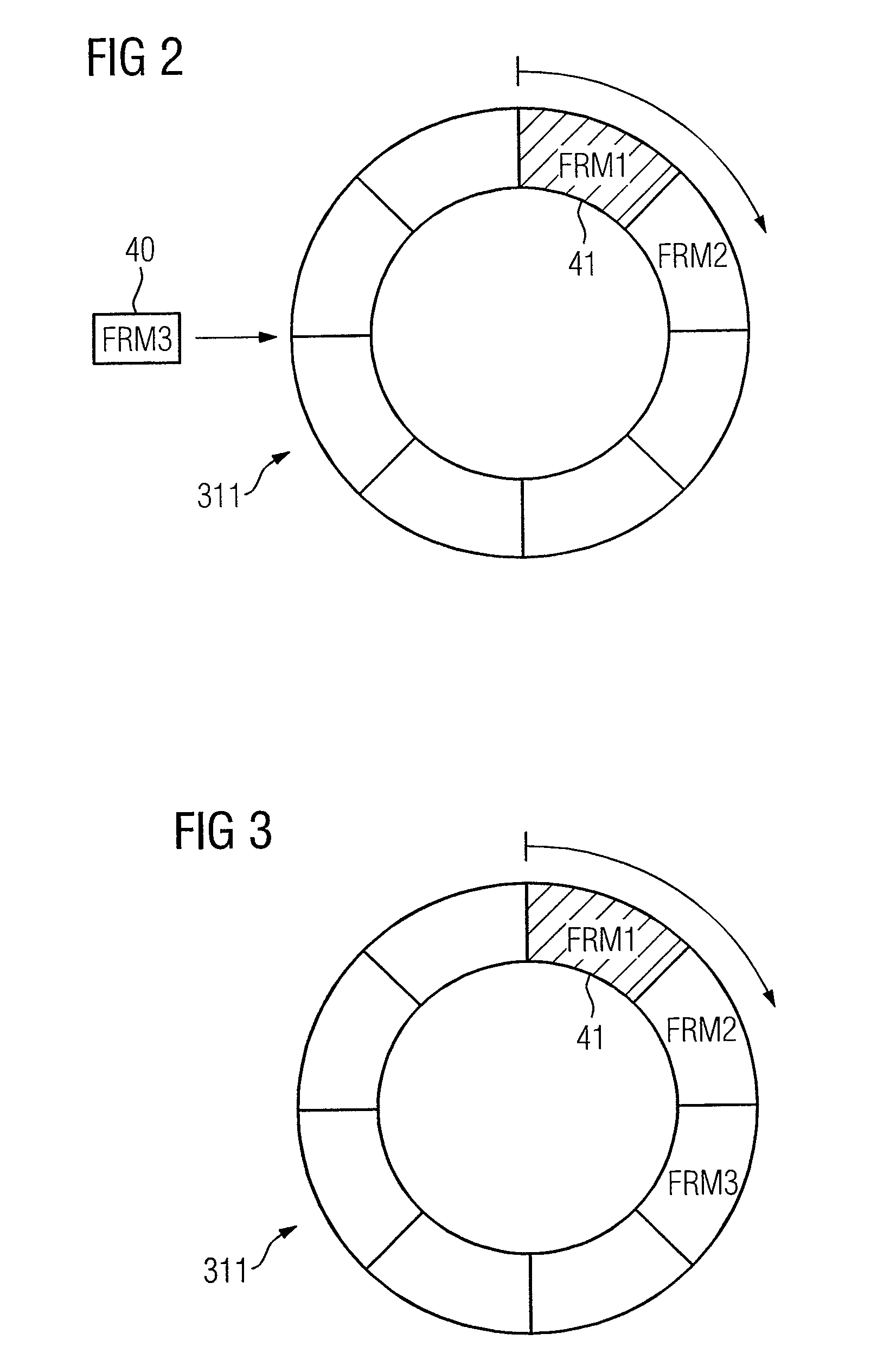Redundantly operable industrial communication system and method for operation thereof
a technology of industrial communication system and redundant operation, applied in the direction of bus network, digital transmission, data switching network, etc., can solve the problems of message loss, message that contains useful data cannot be continuously circulated within the ring topology, etc., to avoid inadmissible high latencies, reduce latencies, and efficient handling of redundant messages
- Summary
- Abstract
- Description
- Claims
- Application Information
AI Technical Summary
Benefits of technology
Problems solved by technology
Method used
Image
Examples
Embodiment Construction
[0029]The industrial communication system shown in FIG. 1 comprises a plurality of communication devices 11, 12, 13, 14 that are redundantly linked to two network portions 1, 2 and that, in the present exemplary embodiment, are of identical design. By way of example, a redundantly linked communication device 11 that may be associated with a supervisory control and data acquisition (SCADA) system 110 and is connected thereto by an interlink port 117 is shown in more detail. The remainder of the redundantly linked communication devices 12, 13, 14 in the present exemplary embodiment are associated at field level with sensor and actuator systems of an industrial automation system, such as a production robot 120, a drive unit 130 for a conveyor system or an operating and observation station 140 on a production line.
[0030]The redundantly linked communication devices 11, 12, 13, 14 each have a first and a second transmission and reception unit 111, 112, 121, 122, 131, 132, 141, 142, each o...
PUM
 Login to View More
Login to View More Abstract
Description
Claims
Application Information
 Login to View More
Login to View More - R&D
- Intellectual Property
- Life Sciences
- Materials
- Tech Scout
- Unparalleled Data Quality
- Higher Quality Content
- 60% Fewer Hallucinations
Browse by: Latest US Patents, China's latest patents, Technical Efficacy Thesaurus, Application Domain, Technology Topic, Popular Technical Reports.
© 2025 PatSnap. All rights reserved.Legal|Privacy policy|Modern Slavery Act Transparency Statement|Sitemap|About US| Contact US: help@patsnap.com



